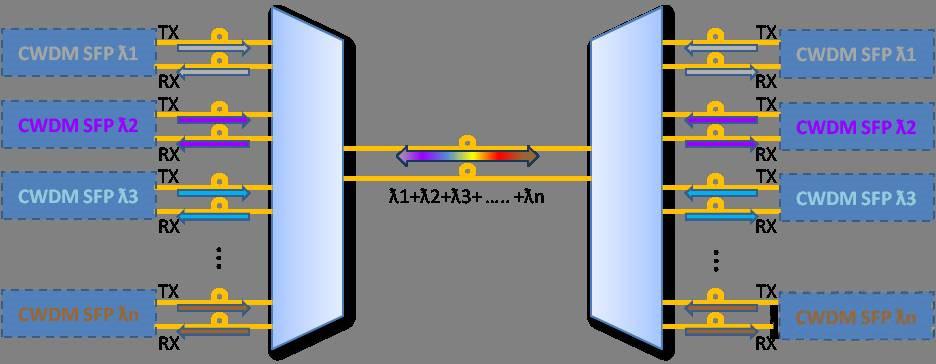- Related articles
- Ethernet Standards for Optical Fiber Networking
- What are optoelectronic devices?
- Used in 40GBASE-ER4 Standard Optical Transceiver Models
- Optical Transceivers for Cisco WS-C2960S-F48TS-S Switch
- Optical Transceivers for Cisco N3K-C3524P-10G Switch
- All Cisco SFP-GE-L's information (List price, Specs, Datasheet PDF, Compatibility matrix)
- All Cisco GLC-FE-100EX's information (List price, Specs, Datasheet PDF, Compatibility matr
- Optical Transceivers for Cisco SG300-10SFP-K9-EU Switch
- Buying guide :What is transceiver and what does it do?
- 1 GBE SFP SX (1000BASE SX) fiber transceiver

Metropolitan area network refers to the communication network which is built in a city. The transmission medium is mainly used with optical fiber. It is a high-bandwidth, multi-function and multi-service multimedia communication network integrating data, voice and video service. Now, with the growing demand for network bandwidth, the expansion of existing metropolitan area network data transmission capacity has been urgent.
Nowadays, Coarse Wavelength Division Multiplexing (CWDM) technology is considered to be an effective means of expanding the optical fiber transmission capacity of metropolitan area networks and is more cost-effective than intensive wavelength division multiplexing (DWDM) technology. This tutorial will describe the application of CWDM technology in Metropolitan Area Network.
Brief Introduction of CWDM Technology
Coarse wavelength division multiplexing (CWDM) technology is considered to be an ideal program to expand the access network and MAN transmission capacity. Although the CWDM system supports a limited number of wavelengths (up to 18), its deployment cost is much lower than that of a dense wavelength division multiplexing (DWDM) system and is well suited for metropolitan area networks. In addition, the deployment and installation of coarse wavelength division multiplexing (CWDM) systems are simpler than the dense wavelength division multiplexing (DWDM) system.

The benefits of CWDM system in the metropolitan area network
The use of coarse wavelength division multiplexing (CWDM) systems in metropolitan area networks has the following advantages:
1. The ITU-T G.694.2 standard defines 18 wavelengths from 1271 nm to 1611 nm for coarse wavelength division multiplexing (CWDM), and the interval between adjacent wavelengths is 20m, which makes the coarse wavelength division multiplexing (CWDM) system .You can use low-cost without cooling the laser and broadband filter, thus saving the cost of high-power cooling system.
2. The optical amplifier is not used in the CWDM system, but the optical signal regenerator is used at each node. Due to the low number of wavelengths in the coarse wavelength division multiplexing (CWDM) system, the reproduction cost of the optical signal is also low. And CWM system is also very flexible and convenient, making it the preferred program in the expansion of metropolitan area network.
3. The CWDM system can reach 100 km coverage, which can meet the needs of most metropolitan area networks.
Conclusion
Compared with dense wavelength division multiplexing (DWDM) technology, coarse wavelength division multiplexing (CWDM) technology is more suitable for metro applications, it is not only flexible, easily to manage, and can save a lot of MAN expansion cost.





































































